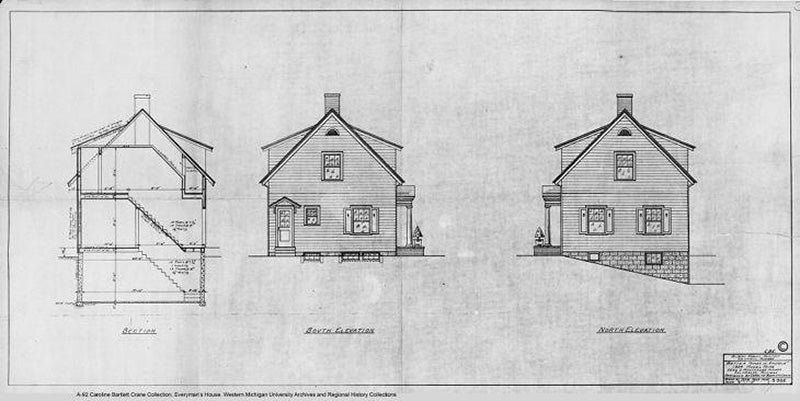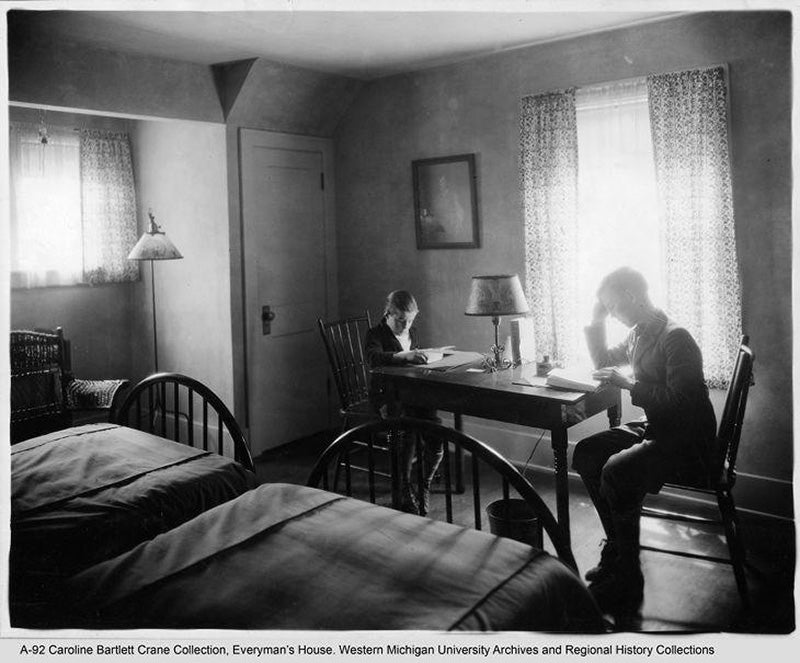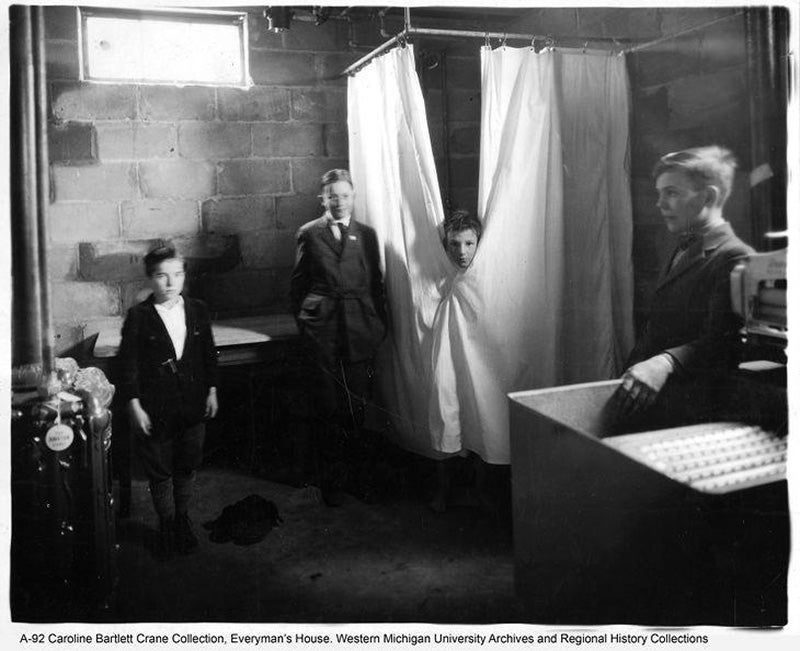Maybe you’ve watched one too many episodes of Tiny House Nation (or Tiny House Hunters or Tiny House, Big Living or Tiny Luxury or Container Homes), and now you want to downsize your life into a 600-square-foot paradise. It’s the new way to live! But as an archival collection shared via JSTOR by Western Michigan University shows, the tiny house trend isn’t new at all. In the 1920s, sociologist and social reformer Caroline Bartlett Crane designed and promoted what we would now consider a tiny home as part of a larger effort to provide adaptable, affordable housing in the United States.
Trained in both sociology and in the ministry, Crane believed “that housing reform was essential and perhaps key to all other social improvements in an increasingly democratic society,” writes Nancy J. Rosenbloom, and she looked for solutions to problems wherever possible. In 1891, while in Great Britain on a preaching circuit, she visited the Salvation Army and Toynbee Hall, a “foundational settlement house” in a worldwide movement to provide charitable housing in a manner that would put the working classes in contact with the wealthy. With her church’s “Unity Club,” she conducted a study of Kalamazoo and its municipal services in 1896, gathering data on sanitation, air pollution, housing conditions, and the state of the jails and poorhouse, explains sociologist and Crane scholar Linda Rynbrandt.

By 1910, Crane was providing her expertise on municipal services to the City of Rochester, producing A Sanitation Survey of Rochester, New York (1911). As Rosenbloom writes, her observations of, and anger about, “accumulations of garbage, inadequate fire protection, and over-crowded boardinghouses” in tenement districts led her to propose a plan that would allow Rochester’s residents to invest in freestanding houses close to transportation lines.

Crane would eventually provide consulting services to more than sixty American cities, helping reform “municipal housekeeping” practices around the nation and earning the moniker “America’s housekeeper” for herself. In 1924, her efforts came to the attention of Herbert Hoover, who, in addition to serving as US Secretary of Commerce, was the president of the board of directors of the Better Homes in America program. Hoover invited her to contribute a design to the competition, which promoted patriotic (read: white, middle-class) values through ownership of small, standardized houses. Citing Kalamazoo’s housing shortage and the difficulty of financing the construction of new homes, Crane accepted the challenge.
Working with Kalamazoo architect George Gilbert Worden, Crane designed what she described as a “space-saving, step-saving, time-saving, money-saving small house” in Everyman’s House, her 1925 book documenting the project. As she admitted to a (possibly fictitious) trolley car conductor in the book’s opening pages, the house
does look small—our little Colonial cottage in its formal planting—a prim little tailor-made affair; deep cream clapboarded walls with moss-green roof, and blinds whose openings repeat the pattern of the dwarf arbor-vitæ either side of the brick-paved stoop. A neighbouring garden club planted them there, whose guerdon is to be the lighting of these baby trees each Christmas Eve. It certainly does look small.
The house looked small because it was small, with a footprint of just 638 square feet. But as the architectural drawings show, Everyman’s House came with a full basement (a quarter of which was occupied by the furnace and coal bin) and a second floor, which, thanks to generous dormers and knee walls that framed out closets, almost doubled the living space of the main floor.

Crane relied on donations of materials and labor from other Kalamazoo citizens to cover the construction costs—between $5,000 and $7,000, exclusive of the price of the lot and the architect’s fees. When the home opened for tours, it was furnished as if a nuclear family—mother, father, two girls, two boys—lived in it. The kitchen, with an attached Mother’s Room (a multi-function room with beds for parents and infant) and easy access to the basement laundry, was at the design’s core. Crane apologized for banishing the man of the house to the basement workroom and hypothetical garage, but she argued that “three-meals-a-day remains woman’s most exciting job…they tie her to the stove and the clock, at the hub of the house and of the household circle,” and it was this domestic labor that determined the family’s living arrangements, comfort, and health.
Weekly Newsletter
Some 20,000 people toured Everyman’s House, and it won first prize in the 1924 Better Homes in America competition. In October 1925, Hoover invited Crane to again chair Kalamazoo’s Better Homes Committee. But Crane, possibly discouraged by a copyright struggle with the publishers of her book and her own poor health, began to pull back from public work in 1925.

Everyman’s House was built as a competition entry and a demonstration model, but Crane’s design ideas lived on: the home still stands in Kalamazoo, and drawings, photographs, and other documents related to the design have been made available for all to access via JSTOR by Western Michigan University.
Support JSTOR Daily! Join our membership program on Patreon today.







